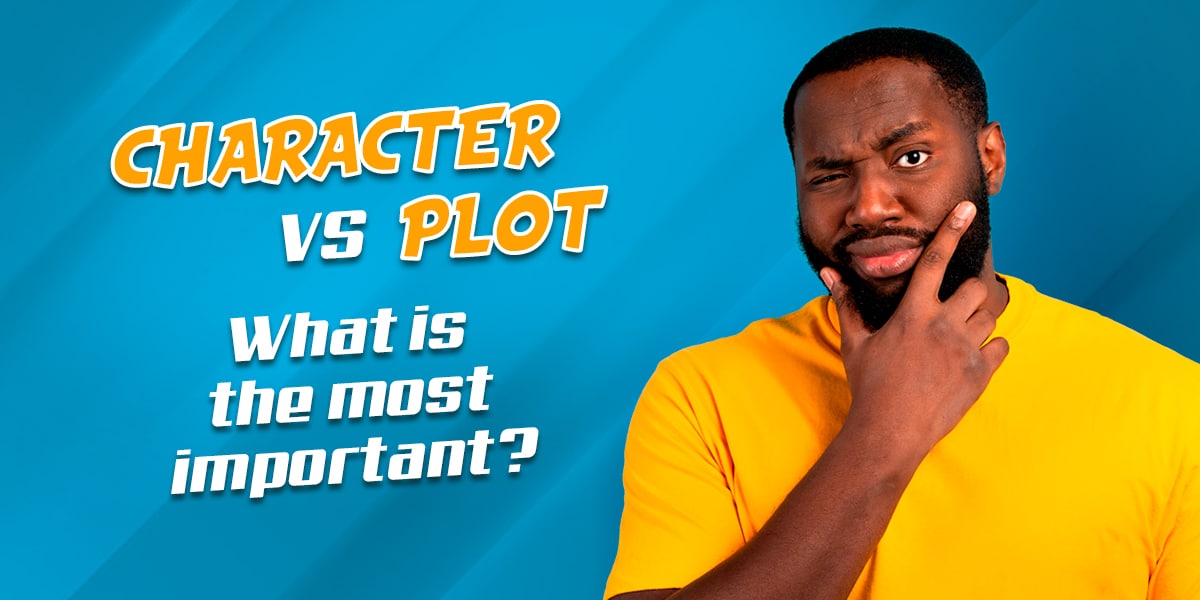Characters VS Plot: What’s Most Important in a Story?
In the fascinating world of storytelling, whether in comics, graphic novels, or any form of sequential art, a question arises that has intrigued creators and readers alike: What’s more important, characters or plot? This seemingly simple question hides a complexity that deserves to be explored in depth. Get ready to immerse yourself in a journey that will challenge your perceptions about story construction and inspire you to view your creations from a new perspective.
Throughout this article, we’ll unravel the threads that weave the relationship between characters and plot, discover how decisions shape both the protagonists and the course of the narrative, and explore why this dichotomy may be more illusory than it seems at first glance. Are you ready to question your preconceived ideas and discover new ways to enrich your stories? Keep reading and prepare to transform your creative approach!
The Symbiosis Between Character and Plot: An Inseparable Dance
Many have tried to answer the question of what’s more important in a story: characters or plot. Typical answers abound: that plots are crucial in short stories, that characters are the soul of lengthy narratives, or that in some stories, atmosphere is everything. It’s even been said that the question is meaningless, as the plot is simply what the characters do. But is it really that simple?
The reality is that characters and plot are intrinsically intertwined, forming a symbiosis that gives life to the most memorable stories. Imagine your favorite characters: would they be the same without the experiences they’ve lived through? And would those experiences have the same impact without characters to live and feel them? This interconnection is what makes great stories resonate with us, inviting us to explore fascinating worlds and unforgettable characters. Want to create stories that capture the imagination? Discover how here.
But there’s more to this relationship than meets the eye. Characters are not only determined by the plot they inhabit and provoke; they also possess a life that transcends the boundaries of a single story. Think of cultural icons like Sherlock Holmes, Don Quixote, or Ulysses. How many people know these characters without having read the original works? This ability of characters to exist beyond their initial narratives adds a fascinating layer to our discussion.
The Metamorphosis of Character: A Journey Through Stories
A fascinating aspect of characters is their capacity for evolution and adaptation. When a character moves from one story to another, whether in sequels, adaptations, or even in the popular imagination, they undergo a subtle but significant metamorphosis. This phenomenon reveals to us that a character is never static; they are reborn in each new narrative, maintaining their essence but adapting to the needs of the story.
Imagine your favorite hero. In one story, they might be a relentless detective with a mind as sharp as steel. In another, a more vulnerable facet might be revealed, perhaps struggling with a pollen allergy that had never been mentioned before. These changes, far from being inconsistencies, are windows into the complexity and richness of a well-constructed character.

This flexibility of characters teaches us a valuable lesson as creators: the importance of adaptability and depth in character development. Looking to perfect the art of creating multidimensional characters? Explore inspiring resources here. By understanding that a character can have multiple facets and evolve through different narratives, we open the door to infinite creative possibilities.
Unraveling the Plot: Beyond the Sequence of Events
When we talk about plot, it’s easy to fall into the trap of thinking of it simply as a sequence of events. However, plot is much more than that. It’s the fabric that connects all the elements of a story, from the characters to the world they inhabit, including the tone and atmosphere that envelop the narrative.
Plot is not just what happens, but how it’s revealed to the reader. It’s the way we dose information, create expectations and subvert them, and how we interweave different narrative threads to create a complex and satisfying tapestry. In this sense, the plot is both the character’s journey and the reader’s experience.
Let’s think about a classic mystery story. The plot is not just the sequence of events that lead the detective to solve the case. It’s also how clues are presented to the reader, how tension is built, and how each revelation changes our perception of events and characters. Want to take your narrative skills to the next level? Discover advanced plot construction techniques here.

Understanding plot in all its complexity allows us to create richer and more satisfying stories. It’s not just about what happens, but how it happens and how it affects all elements of the story. This broader view of plot helps us weave narratives that not only entertain but also resonate emotionally with our readers.
The Power of Decisions: The Beating Heart of Every Story
At the core of every great narrative lies a fundamental element that often goes unnoticed: decisions. It’s these choices, both by the characters and the narrator, that truly shape and give life to a story. Decisions are the bridge that connects characters to the plot, defining who they are and where the narrative is heading.
Think about the stories that have impacted you the most. Aren’t the crucial decisions of the characters what remain etched in your memory? Those crossroad moments where a character must choose between two paths, knowing that their decision will irrevocably alter the course of the story, are what elevate a narrative from ordinary to extraordinary.
Decisions not only reveal a character’s nature; they also forge it. Each choice a character makes is an opportunity for them to grow, change, or reaffirm their convictions. It’s through these decisions that characters become three-dimensional and believable, capable of surprising and moving us.

But decisions don’t just affect characters; they’re the engine that drives the plot. Each choice opens new narrative possibilities, closing some doors while opening others. It’s this web of decisions and consequences that creates the complexity and richness of a good story. Eager to create characters whose decisions captivate your readers? Explore innovative techniques here.
As creators, we must pay special attention to the decisions in our stories. What choices will our characters face? How will these decisions affect not only the plot but also the development and perception of the characters? By focusing on decisions, we can create more dynamic and emotionally resonant narratives.
The Synergy Between Character and Plot: A Holistic Approach
As we delve deeper into the relationship between characters and plot, it becomes evident that trying to separate or prioritize them is a futile exercise. Instead of seeing them as competitive elements, we must understand them as interdependent parts of an organic whole. This holistic perspective allows us to create more cohesive and powerful stories.
Characters are the emotional heart of a story, the vehicles through which readers experience the narrative world. However, without a plot that challenges them and pushes them to grow, even the most interesting characters can become static. On the other hand, an intricate and exciting plot can fall into a void if it’s not anchored in characters with whom the reader can emotionally connect.
Magic happens when characters and plot are inextricably intertwined. Imagine a story where each plot twist reveals a new facet of the characters, and where each character decision alters the course of the narrative in unexpected but satisfying ways. This is the kind of synergy that creates truly memorable stories.
Ready to elevate your visual storytelling to new heights? Discover how to masterfully integrate characters and plot here. By adopting this holistic approach, we not only improve our narrative skills but also create richer and more satisfying experiences for our readers.
Conclusion: The Art of Weaving Unforgettable Stories
At the end of our journey through the fascinating world of storytelling, we find ourselves with a revelation: the question “What’s more important, characters or plot?” is, in reality, a false dilemma. As we’ve discovered, both elements are fundamental and intrinsically intertwined in the art of storytelling.
Characters give life and emotion to our narratives, allowing readers to connect and empathize with the experiences presented. The plot, for its part, provides the necessary framework and structure for these characters to evolve and face significant challenges. And at the heart of all this, we find decisions: the true engine that drives both character development and plot advancement.
As creators, our challenge and our opportunity lie in learning to weave these elements harmoniously. We must create complex and believable characters, build plots that challenge them and make them grow, and design crucial decisions that reveal their true nature and direct the course of the story.
Let’s remember that each story is unique, and what works in one narrative may not be suitable for another. The key is to find the perfect balance between characters and plot that best serves the story we want to tell. Sometimes, this will mean giving more weight to the characters; other times, the plot will take center stage. The important thing is to always keep in mind how these elements interact and complement each other.
In the end, the question is not whether characters are more important than plot or vice versa. The real question is: How can we effectively use both elements to create stories that captivate, move, and endure in our readers’ memories?
Are you ready to take your narrative skills to the next level? Explore advanced resources and techniques here. With practice, dedication, and a deep understanding of how characters and plot intertwine, you’ll be on the right path to create truly unforgettable stories.
So the next time you face the blank page or empty canvas, remember: it’s not about choosing between characters or plot. It’s about creating a magical synergy between both, weaving a narrative that captures the imagination and touches the heart of your readers. The power to create worlds and lives is in your hands!



